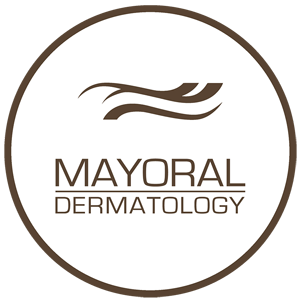Want to know the secret to keeping your skin looking young? Preventative Botox can help maintain a beautiful, youthful face by preventing fine lines and wrinkles from appearing.
What is Preventative Botox?
Before we discuss how Botox can be used preventatively, we should understand what Botox is and why it is used. Botox (also known as Botulinum toxin) is a powerful substance that can be used to prevent wrinkles. (The medical use of Botox can be recommended for non-cosmetic purposes as well.) Botox should only be administered by a medical professional in a clinical setting. The incorrect application of Botox may result in serious, potentially life-threatening symptoms like difficulty breathing or swallowing.
There is no real difference between Botox and Preventative Botox except that Preventative Botox is Botox that is applied before the symptoms of aging begin appearing, vs after they have already formed. It was designed to prevent patients from getting fine lines and wrinkles, which helps to maintain young-looking skin and an overall youthful face..
How Does Botox Prevent Wrinkles?
According to the Mayo Clinic, wrinkles and fine lines can be caused by repetitive facial movements and expressions. Every time a facial muscle is used, it causes a groove to form beneath the skin’s surface. Every time we smile, frown, or squint, we create these grooves. As we age, our skin loses the flexibility that allows it to fill out these grooves.
Botox injections, which contain small amounts of toxin, are applied to specific facial muscles that tend to cause wrinkles and fine lines. This toxin blocks the muscle’s nerve signals and allows them to relax, which, in turn, doesn’t give wrinkles or fine lines the opportunity to form.
When is the best time to start Preventative Botox?
Most patients begin Preventative Botox between the ages of 25 and 30. It is not recommended that patients start Preventative Botox earlier than age 25. At 25, most patients will not have enough fine line or wrinkle damage built up for Botox to be effective.
What areas can be targeted with Preventative Botox?
Preventative Botox can be used almost anywhere on the face. The most common locations we recommend using preventative botox for are the area around the eyes, the area between the eyebrows, the skin surrounding the lips and chin, and the entire surface of the forehead.
What happens in a Preventative Botox procedure?
Pre-procedure information
When you are considering Preventative Botox, the first step is to have an initial consultation with a doctor. The goal of this meeting is to make sure you know what to expect from Preventative Botox and to address any concerns you may have about the procedure. You should discuss what the expected physical reactions to the treatment are, as well as possible side effects and complications you may experience from the procedure. Your physician may also let you know what you should and should not do to prepare for the procedure, and reasonable recovery expectations.
Before you begin your treatment, you should not consume certain drugs due to their ability to create a higher risk of bleeding and bruising. These may include naproxen (for example, Aleve), aspirin, ibuprofen (for example, Motrin), and some other similar drugs. You should tell your doctor about all medications (over-the-counter and prescription) that you are currently using, or believe you may potentially use after your procedure. Additionally, it is also recommended that you alert your doctor to all herbs and dietary supplements that you are taking.
Make sure to share current medical conditions with your doctor or medical professional at the consultation. Illnesses or diseases that may become problematic when combined with Botox include:
- Myasthenia gravis
- Amyotrophic lateral sclerosis (ALS or Lou Gehrig’s disease)
- Lambert-Eaton syndrome
- Breathing problems, like asthma or emphysema
- Discomfort swallowing
- Facial muscle weakness, which may manifest in the form of droopy eyelids, trouble raising your eyebrows, and/or weak forehead muscles
- Heart disease
- Bleeding problems
Talk to your medical professional if you have:
- Had surgery or plan to have surgery (particularly facial surgery)
- Previously received botulinum toxin injections
- Had Botox and experienced side effects.
It is crucial to let your doctor know if you have:
- Given birth recently, are breastfeeding, or are currently pregnant
- Received an injection of botulinum toxin products within the last four months
- Received an injected antibiotic recently
- Taken muscle relaxants, cold, allergy or sleep medication, or blood thinners like aspirin or other anticoagulants.
During and immediately after the appointment
When in the doctor’s office, you should expect to lie facing upwards. The specialist may ask you to make faces to help them identify facial muscles and lines that will be treated. This will allow them to apply the Preventative Botox accurately.
The process of injecting the Preventative Botox will take 10 – 30 minutes. Your medical professional will apply the Preventative Botox, which may cause bumps at the injection site. These should disappear within the first half-hour. During the first 4 hours after the treatment, your face must be kept upright. After Preventative Botox injections, you are advised to not exercise until your medical specialist has cleared you for such activity. We recommend avoiding activities such as facial massages, anything that applies heat to the face, or any otherwise strenuous activity after a Preventative Botox procedure.
After the Procedure
Over the next few days, the muscles in your face should relax. Any facial wrinkles and fine lines that were present before the procedure should begin to disappear during this time. Final results can be seen usually around two weeks following the procedure. The treatment typically lasts for 12 weeks. It’s recommended that you schedule follow-up appointments every 3 to 4 months. Patients who have used Preventative Botox in a long-term capacity report that their skin remains softer and more hydrated than it was without Botox.

